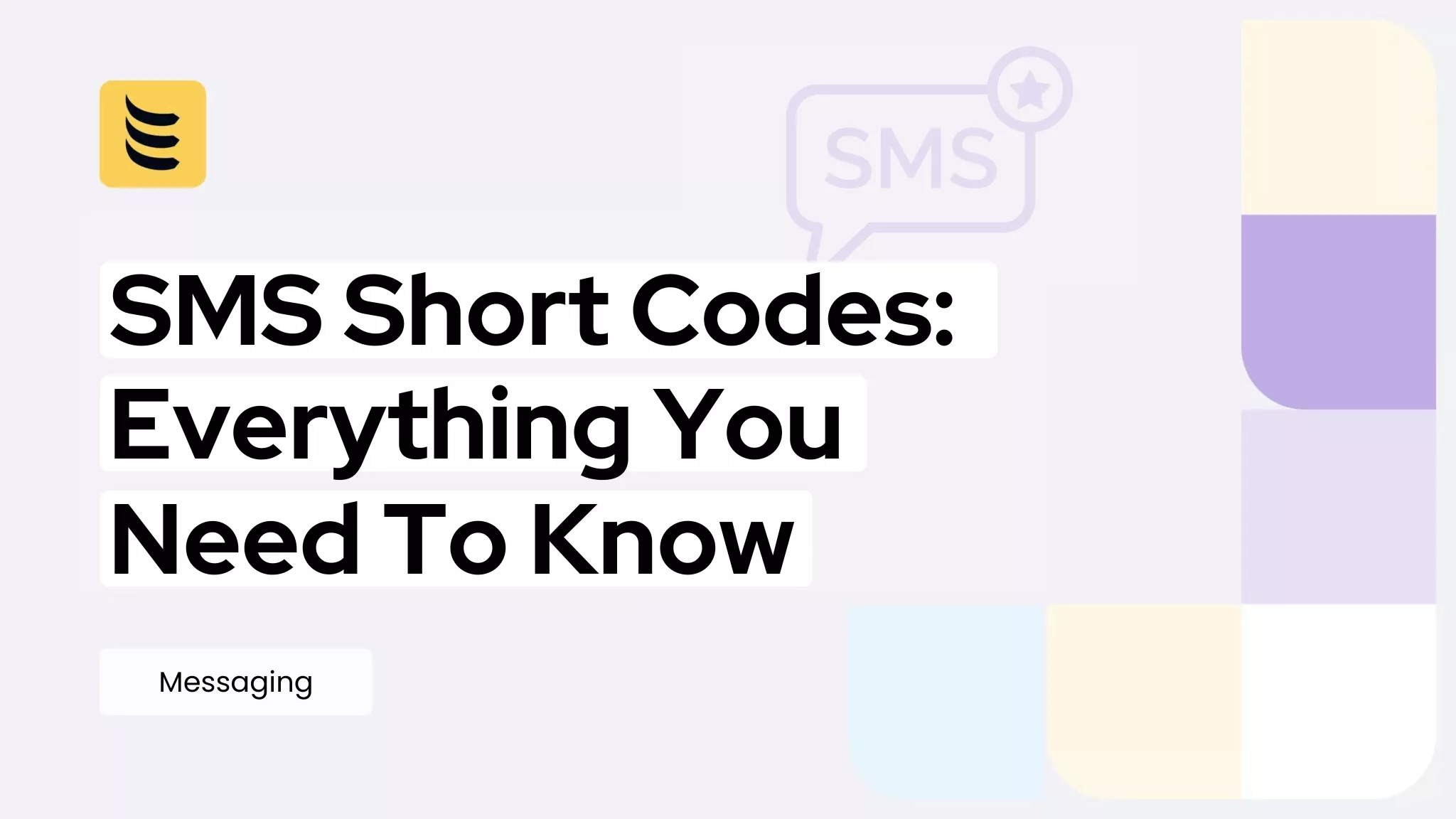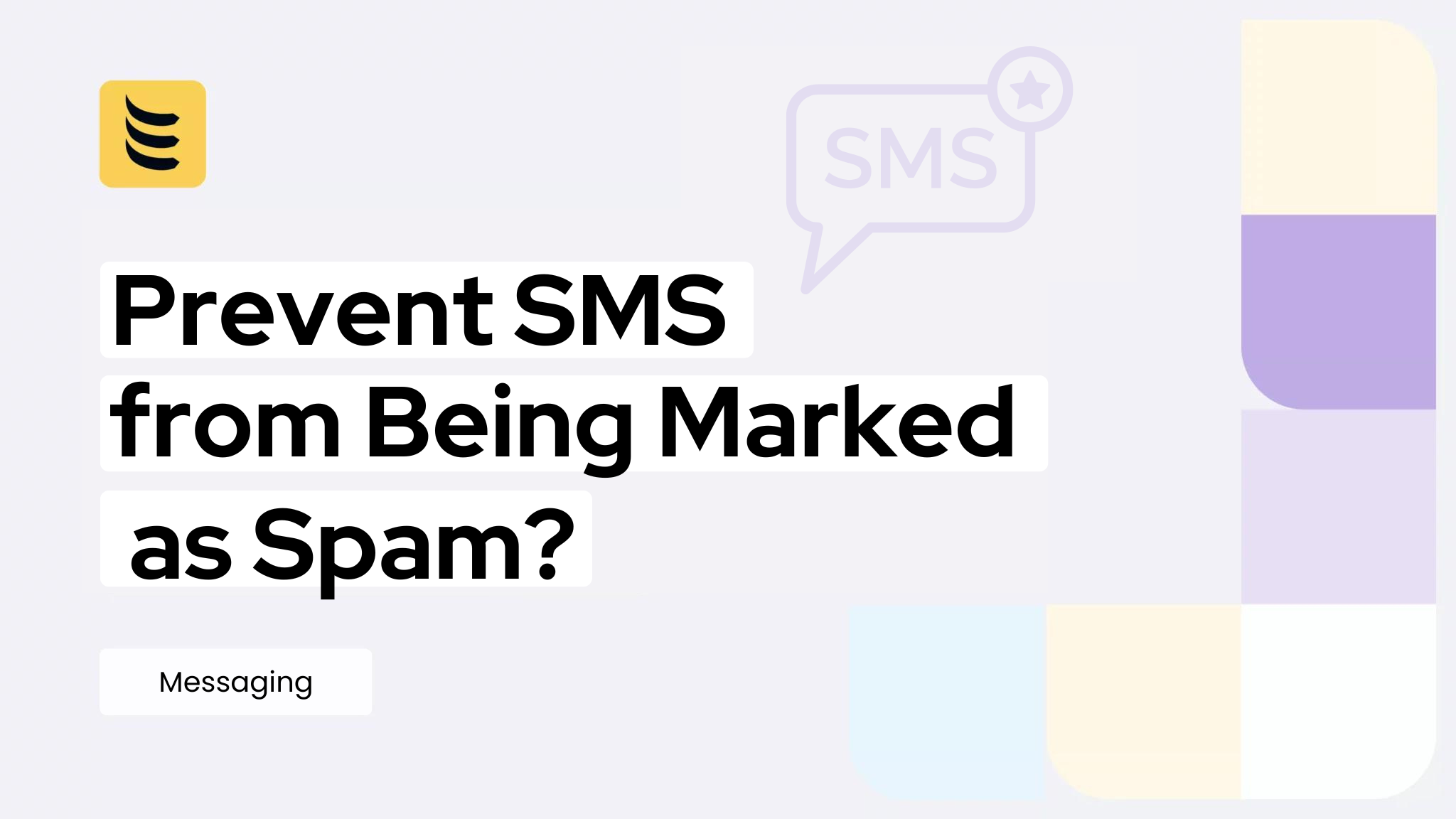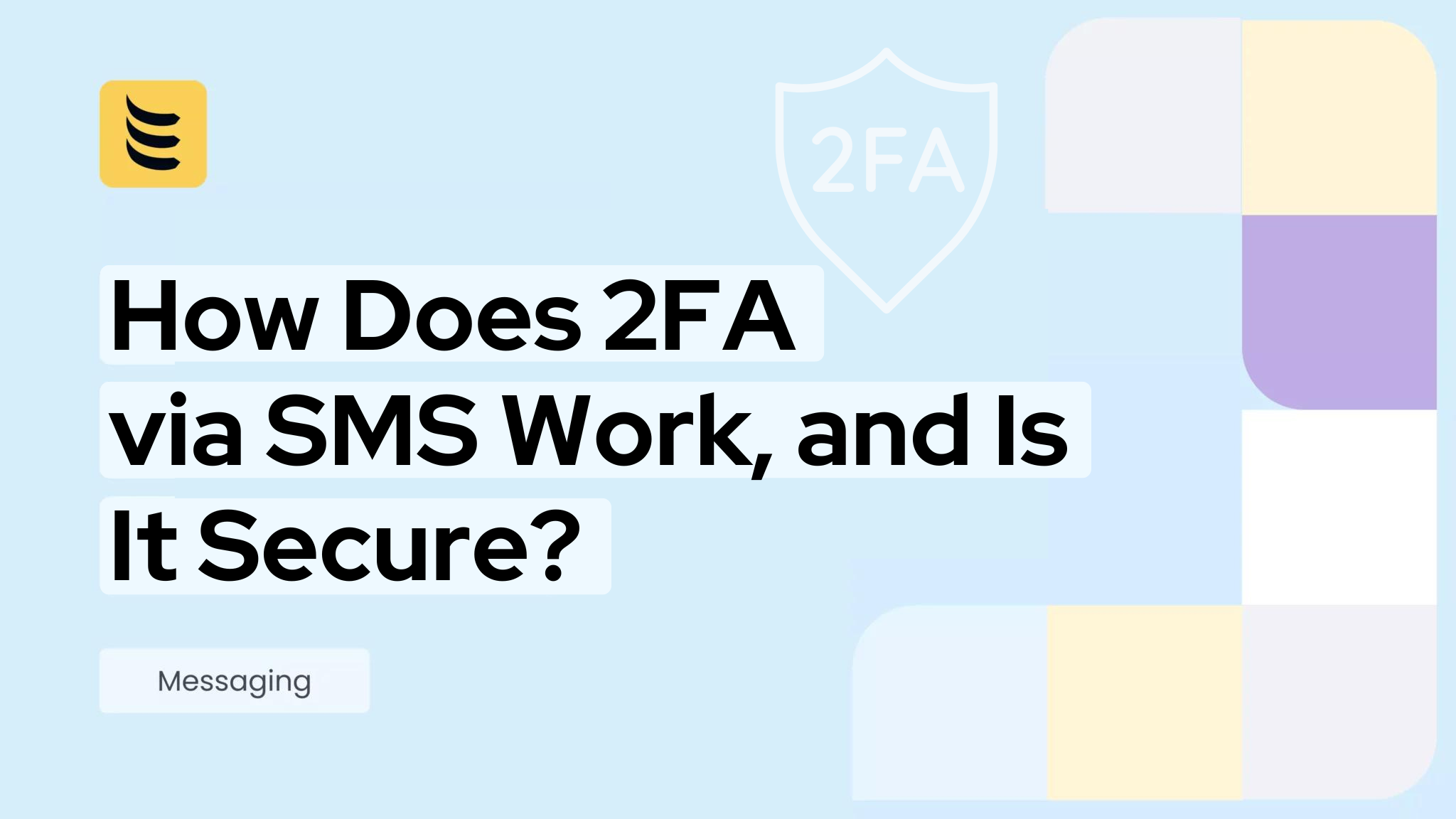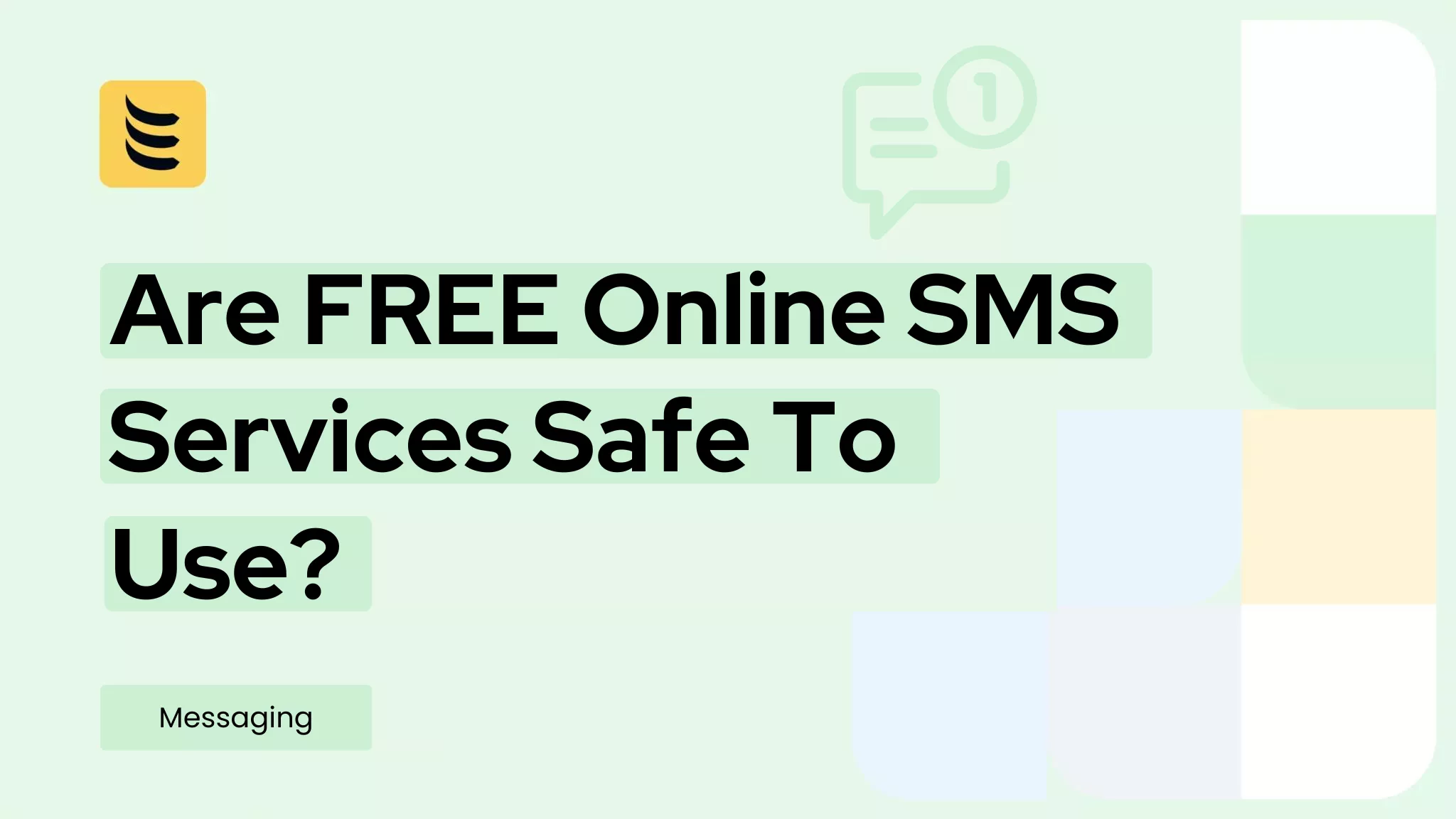Introduction
Around 65% of the global population uses Short Message Service or SMS communication. In the US, the value of the SMS market is anticipated to reach around $12.6 billion by the end of 2025. The same Grandview Research study predicts that the SMS market will grow at an average growth rate of 20.3% by the end of 2025.
Some 64% of consumers think that businesses should contact them more often through SMS, while it’s estimated that two-way text messaging can improve business efficiency by almost 80%. In most cases these days, consumers have to opt in, to receive text messages from businesses. One way of making this easier and more memorable for the recipient is through the use of SMS Short Codes.
What are SMS Short Codes?
SMS Short Codes are short, easy-to-remember phone numbers that customers can use to opt-in to receive messages from a specific business. They usually consist of five or six digits. Businesses can use Short Codes to send and receive both SMS (Short Message Service) and MMS (Multimedia Messaging Service) messages. Organizations can do this either as part of their marketing activities, or as part of their standard business operations.
SMS Short Codes are usually country-specific and don’t support international roaming. Some notable exceptions to this include the United Kingdom and the Republic of Ireland.
Note also that you cannot receive voice calls at a short code number. Their use is limited to SMS and MMS messaging. Typical applications include customer-interactive marketing, the exchange of verification codes, and two-factor authentication (2FA).
Types of SMS Short Codes: Dedicated vs. Shared
There are two principal types of SMS Short Code – namely, shared and dedicated.
Shared codes are used by more than one business entity, with the distinction being made between users by the company’s choice of keyword. Shared codes are typically the cheaper option, making them a good choice for running short and unique campaigns.
You should note however that in many countries, most carriers have discontinued shared short codes. In the US for example, mobile operators now require users to migrate shared short codes to either a dedicated short code or a ten-digit long code (10DLC).
Dedicated codes do not require a dedicated keyword, and are for the exclusive use of a single company. With a dedicated code, SMS traffic goes directly to your account – and you can choose the digits that make up the short code. Typically, this might be a combination of numbers that spells out a word associated with your brand or industry. Alternatively, you can opt for a random code, which is a combination of random numbers assigned by the operator. This is usually the cheaper option.
Zero-rated short codes are a special class of code which companies can use for two-way interactions with their customers. Here, the customer does not pay the cost of sending messages to the company – rather, the business takes on this liability. Organizations typically use zero-rated short codes for opting out, as many regional jurisdictions require free opt-out for business text messaging.
How SMS Short Codes Work: A Step-by-Step Explanation
With dedicated short codes now being the norm, businesses will typically lease a short code for a set period, such as three months, six months, or a year. The application for a short code takes place through your SMS service provider.
In the US for example, businesses must apply to the US Short Code Administration before leasing a short code. The application process typically involves providing information about how the short code will be used, and what types of messages the company will send.
As an alternative to applying directly, a business may engage with an SMS API (Application Programming Interface) provider or aggregator, which undertakes to acquire a short code on their behalf.
In either case, the short code application must go through an approval process, which may take six to eight weeks for a dedicated short code. Each wireless carrier must approve a proposed business campaign before sending traffic over a short code. Most carriers regulate short codes based on the Cellular Telecommunications Industry Association (CTIA) Short Code Monitoring Handbook. Since the approval process will likely take several weeks, it’s important to plan ahead and consider the timeframe when incorporating SMS code numbers or short codes into your marketing strategy.
Once a short code is approved, an organization will typically pair it with a keyword, which allows users to opt in to receive messages from the organization itself, or from a specific campaign. For example, your restaurant might might ask customers to text the keyword “PASTA” to a short code number to receive details about the Italian dishes featuring on your current menu. Using an SMS Short Code gives the potential customer a shorter number to have to remember when they send the text – especially if that number also has some recognizable link to the restaurant.
Businesses can use SMS short codes for several purposes. In marketing campaigns for instance, companies can enable their customers to opt-in for promotions, coupons, or special offers by texting a keyword to the Short Code.
Organizations can use short codes to provide information services such as weather updates, news alerts, stock quotes, or sports scores. Users can send a specific keyword to the Short Code to receive the desired information.
To participate in contests or surveys, or to vote on reality TV shows and opinion polls, users can send their choices or responses to an SMS Short Code. In addition, business entities seeking donations (such as non-profit organizations and charities) can use Short Codes to enable individuals to make donations via text message.
Benefits of Using SMS Short Codes for Businesses
With the option to use third-party cookies for marketing gradually fading out, SMS code numbers have become increasingly important. For businesses, using SMS short codes provides a number of benefits. These include:
Ease of Use
Consisting only of a few digits, short codes are easier for customers to remember than traditional phone numbers. Sending text messages to a business using SMS Short Codes is also a less labor-intensive process.
Better Response
Businesses that include a Short Code in their advertisements or promotional material can prompt customers to take immediate action by sending a text message, encouraging higher response rates.
Tailored Messaging
SMS Short Codes enable businesses to tailor their messaging to specific customer segments. Using targeted campaigns that address the unique needs and interests of different groups of customers, your business can improve the relevance of its messaging, This helps increase the likelihood that customers will engage with your content.
Personal Engagement
Using Short Codes enables your business to communicate with customers on a more personal level. Sending messages directly to a customer’s mobile device establishes a more direct and immediate connection, which may be difficult to achieve through other marketing channels.
Two-Way Interaction
Short Codes also support two-way communication, which allows businesses and organizations to engage in conversations with their customers. Users can send messages to a Short Code, and the business can respond with automated or personalized messages, creating an interactive and engaging experience.
Automation and Scalability
Businesses can integrate Short Codes with automated messaging systems, making it possible to handle high volumes of messages efficiently. With messaging automation, businesses can provide instant responses, information delivery, and customer support, even during peak periods. This also enables businesses to scale, and handle a large number of incoming messages without significant manual effort.
Opt-In and Opt-Out
Customers can easily choose to opt-in to receive specific information or promotions by texting a keyword to a Short Code. In a similar manner, they can opt-out by sending a designated keyword to the Short Code. This ensures compliance with regulations, and provides users with control over their messaging preferences.
Branding and Promotion
Using dedicated Short Codes, businesses can have their unique number associated with their brand. This enhances brand recognition and reinforces the connection between the business and its customers.
Optimization
Short Codes offer tracking and measurement capabilities, empowering businesses to monitor the success of their campaigns. Organizations can track the number of incoming messages, response rates, and user engagement, providing valuable insights for future campaign optimization.
SMS Short Codes vs. Long Codes: Key Differences
As their name suggests, 10-Digit Long Code or 10DLC numbers consist of ten digits, incorporating a country code, regional code, and individual business phone number. In contrast to short codes, 10DLC numbers offer a more cost-effective solution, as organizations can register them within a shorter timeframe. This is particularly true for A2P or Application to Person communications, which makes long codes an attractive option for small and medium-sized businesses (SMBs).
Similar benefits can hold for toll-free numbers, which are traditionally used for phone calls, but may also be used for SMS marketing campaigns. Business marketers should however note that toll-free numbers do not support MMS (Multimedia Messaging Service), which limits the types of messages that you can send.
SMS communication using longer format phone numbers is also subject to message filtering. Using mechanisms that range from a simple static list of prohibited terms, to advanced machine learning algorithms, SMS filters act to protect mobile users from fraud, spam, and other forms of unwanted messaging. They also help enforce compliance with relevant data protection and anti-fraud frameworks.
This filtering process imposes a delay on SMS transmission which can be a serious obstacle for time-sensitive marketing and notification campaigns.
Industries That Benefit Most from SMS Short Codes
Using SMS Short Codes can bring specific benefits to organizations in a number of key industries. Among them are the following:
eCommerce
Nurturing customer relationships and processing customer data are keys to success for eCommerce players. Using SMS Short Codes to initiate and sustain interactions with consumers can contribute greatly to this.
With SMS communication, businesses can send personalized offers, order confirmations, shipping updates, and promotions directly to their customers’ phones. eCommerce organizations can steer the customer journey by using SMS notifications for abandoned cart reminders, or by sending limited-time offers and exclusive discounts.
Using SMS Short Codes, companies can easily ask customers for feedback after purchases, and for their general views about the eCommerce organization. This information can assist in refining offers, gauging customer satisfaction, and identifying potential areas for improvement.
Education
Educational establishments can use SMS communication to send important announcements, event reminders, and emergency notifications to students, parents, or staff. Institutions can also use SMS Short Code interactions to deliver registration and enrollment updates, and to keep stakeholders informed about important deadlines, grades, attendance figures, and the status of their applications.
FinTech
In the Financial Technology or FinTech sector, the use of SMS Short Codes and a robust communications platform empowers organizations to offer real-time notifications to their customers. For secure logins and transaction verification, two-factor authentication (2FA) codes can also add an additional layer of security protection.
FinTech companies that use SMS Short Codes can also keep customers engaged and in the loop, with transaction alerts, account updates, payment reminders, and red flags for suspicious activity.
Healthcare
Organizations in the healthcare industry can use SMS communication to send appointment reminders, prescription notifications, health tips, and promotional offers. By using SMS Short Codes to encourage two-way interactions with patients, health providers can facilitate treatment regimens, and keep stakeholders up to date with the latest developments in each treatment case.
Healthcare institutions can also use SMS marketing to increase public awareness of disease outbreaks, vaccination drives, or preventive health measures.
Hospitality
Guest and traveler experiences are key differentiators for organizations in the hospitality industry. Organizations can improve communication and customer satisfaction by using SMS to send travel itineraries, booking confirmations, reservation reminders, and special promotions. Hospitality businesses can also use SMS notifications to recommend nearby restaurants, attractions, or events during a guest’s stay.
Initiating dialogue via SMS Short Codes also helps hospitality providers to elicit customer feedback and send out surveys. Information from these sources can provide valuable insights on how to improve services, and tailor more personalized offers.
Best Practices for Implementing SMS Short Code Campaigns
To ensure SMS compliance with relevant regulations in your area of operation, and to get the most out of your SMS Short Code campaigns, you can implement the following best practices and recommendations:
Know Your Goals
Before launching an SMS marketing campaign, it’s important to establish clear goals and key performance indicators (KPIs). These might for example include click through rates, or engagement tracking.
Know the Rules
You should familiarize yourself with the rules and regulations governing the use of short codes in your operating environment. This will help to ensure that your messages comply with all applicable laws and guidelines.
Obtain Proper Consent
Always obtain explicit consent from recipients before sending out commercial SMS messages.
Provide Opt-out Options
With each message, you should include clear instructions on how recipients can opt out of future messages.
Monitor and Record
To demonstrate your compliance status, you should maintain records of all consent and opt-out requests. You should also monitor the legal framework for regulatory changes, and update your SMS marketing practices accordingly.
Get Compliance Help
Use an SMS marketing platform that offers built-in compliance features, such as consent management and opt-out management. You can also collaborate with industry associations that provide guidance on SMS marketing compliance best practices.
Be Memorable
If possible, choose a vanity short code that is easy for customers to remember. A catchy and memorable short code can increase engagement and response rates.
Promote Your Short Code
You can promote your short code number through physical signage, social media, websites, and other marketing materials, to encourage opt-ins and increase awareness of your SMS marketing campaigns.
Be Tactical
Use your short code to send time-sensitive messages or limited-time offers. Creating a sense of urgency with these messages can drive immediate action from your audience. You can also leverage your short code to send high-volume messages for mass marketing.
Take a Balanced Approach
Take some time to achieve the right balance in the frequency and volume of your SMS messages. Avoid overwhelming your audience with too many messages, but also ensure that you are sending enough to keep customers engaged and informed.
Enhance Your Customer Service
SMS messaging can be a convenient and efficient channel for customers to communicate with your business. Use your short code to provide customer support, and for addressing questions or issues.
Use Automation
SMS automation tools can help streamline your marketing campaigns. For example, you can set up automated workflows and triggers to deliver personalized messages at specific times, enhancing the customer journey, and improving the overall customer experience.
Monitor Your Progress
With your marketing goals and key performance indicators (KPIs) already established, you should use an SMS marketing platform with tools and features that allow you to track metrics, analyze data, and optimize your campaigns.
Compliance and Regulations: Navigating SMS Short Code Laws
In many jurisdictions, it’s both a best practice and a legal requirement that businesses should only send text messages to customers who have specifically opted into that service. Statutes governing the use of SMS and Short Codes vary by region. So if your business operates in multiple jurisdictions, it’s worth being aware of the regulations and compliance regimes that apply in each of these areas.
SMS marketing within the US is primarily regulated by the Telephone Consumer Protection Act (TCPA), and guidelines from the Federal Communications Commission (FCC). Among the principal requirements is that marketers must obtain explicit consent from the recipients before sending out commercial SMS messages. Each message must also provide a clear and easy way for recipients to opt out of receiving future communications. In terms of content, SMS messages must not contain anything misleading or deceptive.
Note also that businesses in the US that rely on 10 Digit Long Code or 10DLC number formats for sending their SMS communications need to register their campaigns with the appropriate carriers, and adhere to guidelines set out by the Cellular Telecommunications Industry Association (CTIA).
In Canada, the Canadian Anti-Spam Legislation (CASL) governs SMS marketing. Among the key requirements of the law is that marketers must obtain express or implied consent from their recipients before sending out commercial electronic messages (which includes SMS). Business SMS messages must also contain clear sender identification, along with the sender’s contact information. As in the US, recipients must be able to easily opt out of receiving further messages.
If your organization operates within Europe, or if you have customers resident within the European Union (EU), then the provisions of the General Data Protection Regulation (GDPR) and the ePrivacy Directive will apply to your business SMS communications. Under these regulations, marketers must be able to demonstrate that they have a lawful basis (such as customer consent or a legitimate interest) for processing personal data in SMS marketing. Recipients must opt in before receiving SMS marketing messages. In addition, business SMS campaigns must adhere to data protection principles, which include data minimization and data security provision.
Costs Associated with SMS Short Codes
The exact price you pay will depend on the type of short code you want (Dedicated, Premium, etc.), the country in which you will be using it, and the duration for which you need it. In the US for example, a randomly allocated short code usually costs between $400 and $600 a month. The price can escalate to more than twice this figure if you want a specific number.
Each SMS Short Code provider will have a different pricing strategy. While it’s still possible to find one that offers a free SMS number, most providers will typically charge a basic fee that includes setup fees, monthly fees, and costs per message. You should carefully read the contract to ensure that there are no hidden charges
Top SMS Short Code Providers: A Comparison
Amongst the top SMS Short Code providers, there are options to cater for businesses of all scales. Leading organizations include the following:
Twilio
Tailored for developers and large enterprises, Twilio provides a highly customizable Application Programming Interface (API) that supports multi-channel communication. The platform has global reach, but doesn’t really provide any collaborative features. Setting up also requires technical expertise.
Prices will vary, depending on the scale and complexity of your operation.
Vonage
Targeting businesses and enterprises with customers all around the world, Vonage provides a global messaging platform with robust API solutions. These solutions are highly scalable, and support SMS, video, and voice. However, setup requires technical knowledge.
Pay-as-you-go pricing starts at $0.0076 per text.
EZ Texting
For small to medium-sized businesses, EZ Texting provides an SMS marketing solution with a user-friendly interface, which offers automation solutions and advanced reporting. However, these advanced features are not available in the lower-tier premium plans. Customer support is also rather hit-and-miss.
Pricing plans start at $25/month.
SimpleTexting
For small businesses and their marketing teams, SimpleTexting offers an SMS marketing solution with easy setup and a user-friendly interface, which supports automatic texts. Customer support is good, but there are limited advanced features.
Pricing plans start at $39/month.
IDT Express
For businesses of all sizes, the IDT Express Omnichannel Messaging Platform supports a wide array of channels, including SMS, WhatsApp, Viber, Telegram, Facebook Messenger, Wix, and Instagram Messenger, offering a versatile and unified messaging experience. There are no additional costs for using multiple channels. Pricing is transparent, and you can leverage all supported channels within the chosen plan without incurring extra charges.
IDT Express is built upon a carrier-grade communications platform that covers over 70 countries, and is capable of delivering 25,000 messages per second. IDT’s Opt-out Management feature empowers you to seamlessly handle SMS opt-out requests from customers and automatically register them in your system, to maintain compliance and provide exceptional customer service. Your business can quickly send SMS polls, surveys and request customer feedback with 2 way messaging. Comprehensive documentation is available to facilitate quick deployment, with 24/7 support for you and your team.
IDT Express Omnichannel Messaging also offers an avenue for seamlessly building customer journeys by fostering interactive conversations, all within the framework of your app. With IDT’s reliable and scalable Notifications API, you can create highly personalized SMS notifications that cater to any use case with unmatched flexibility. The IDT Express SMS OTP API provides the swiftest, highly secure, and cost-effective solution for user verification and authentication.
The IDT Express Omnichannel Messaging Platform provides detailed analytics and reporting tools. So you can track the performance of your messaging campaigns, monitor engagement, and gather insights to optimize your communication strategy. The IDT Express automatic failover system ensures uninterrupted communication by dynamically routing messages through alternative channels if any issues arise. This feature guarantees that your messages reach their destination, even in challenging scenarios.
Getting started with IDT Express Omnichannel Messaging is easy. Simply sign up on our website and follow the onboarding process over email. Our user-friendly interface will guide you through the setup, and our support team is always available to assist you.
There’s a 14-day free trial period, with $25 free bonus credit. No credit card is required, and you can cancel at any time.
To find out more and set up a trial account, visit our website.




